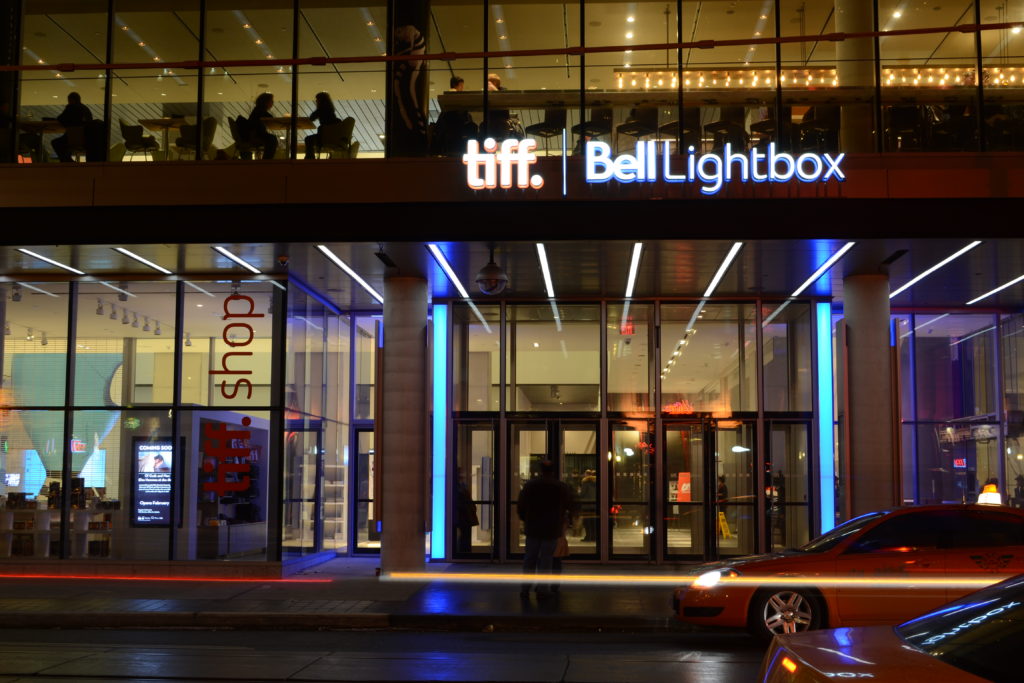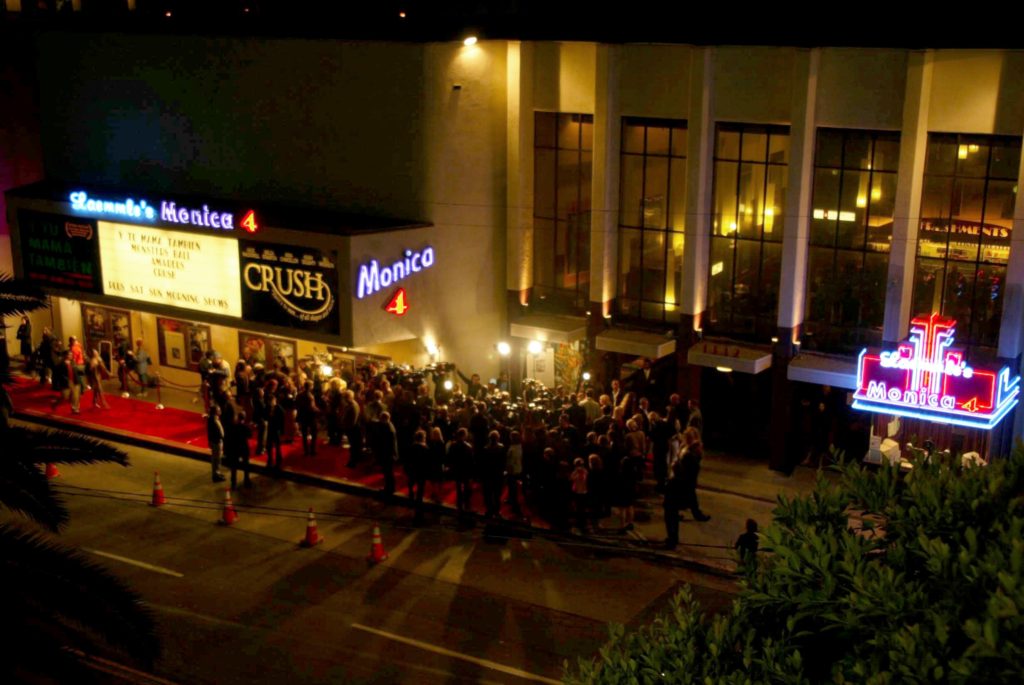I’m back from my social media and all-things-electronic-vacation, and back to writing this newsletter. Can’t say I missed the social media, but I did miss the feedback from readers, so I’m glad to be back.

Fall Festival Thoughts:
This weekend saw the beginning of the Fall film festival season, with Telluride over Labor Day weekend, Venice, and now we go into Toronto, the NYFF and onwards. It’s a thrilling time to be a cinephile if you are lucky enough to live in or be able to visit one of these places, and even better if you get into one of them with your film. No matter the circumstances, that makes you part of the 1%. The very lucky few.
The festival season is a perfect example of the best of times, worst of times dynamics. Even those filmmakers lucky enough to get into TIFF face an uphill battle in getting their films picked up for distribution – heck, it’s tough to even get people to pay attention to your film at TIFF if you aren’t one of the bigger films. Numerous amazing films – especially arthouse, foreign cinema – don’t find substantial distribution, especially not in North America. On the other hand – as a festival-goer, you can’t complain about the plethora of great films on offer. But on the other hand, I’ll bet that once again, when I head to dinner and/or drinks with my industry friends, it won’t be long before the conversation switches from what we watched that day, to what shows we’re obsessed with binge-watching on Netflix – even the industry is focused more on episodic than stand-alone features.
There’s definitely a disconnect between what’s getting made, what’s being programmed at these festivals and what people ultimately want to watch. Many festivals are adding sections devoted to TV and episodic, trying to chase the coattails of this trend, but I think instead, they should be figuring out how to build audiences for these films year-round (to be fair, TIFF is one of many who do a good job at this with their year-round programming). Arthouse cinema can’t survive on the festival circuit alone – the free wine and cheese won’t keep the filmmakers fed (or housed).
But that’s a problem that I either don’t have solutions to yet, or the ones I’ve tried have failed. We need more good ideas – how about some panels about real issues like this, instead of the tired festival panels we keep repeating at every festival? In the meantime, I’m off to TIFF and then the wonderful little Camden Film Fest (Maine), and can’t wait to see some great films, and hope a few will break through the noise and get seen by others soon.

With Laemmle Being Sold, does the Academy need new qualifying rules? – Both Deadline and Indiewire reported in early August that the famed Laemmle Theater chain in Los Angeles may be up for sale. That’s 42 screens in 9 LA locations, and historically, Laemmle has been a consistent home for indie films, particularly documentaries, that want to play an LA theater to qualify for an Academy run. A handful of companies are kicking the tires and may buy the chain, but there’s no guarantee that they’ll follow this practice. What’s been left unstated, but was brought to my attention by a theater booker friend is just how important this is for qualifying. This person’s take was that Laemmle has been the qualifying run home for the majority of indies in LA, and without it, the Academy would literally have to change their rules about a theatrical run in LA being needed to qualify. Greg Laemmle, who owns and runs it, has been a champion for such films, and was willing to take risks to program (or four-wall) them – as LA is the place indie films go to die (not enough people show up). Let’s hope whoever buys it has the same ethos, or this could mean real trouble for the field.
Curating cinema: I’ve written a lot about the need for more and better curation services for film (and other arts), and in particular the need for more film orgs/festivals to do this. Well, Sundance is doing it, so I should give props to them for this service. Their curated list for August came out recently, and was also used as the lede in their most recent email newsletter. Kudos to them – now, I’d love to see them curate lists of films that are not festival alumni – we trust your opinions all around, Sundance, so share them.
And while I’m speaking about curation – why aren’t more trusted brands doing this in their newsletters/catalogues/etc.? And props to three other great curators – POV, the Criterion Channel and Jack Reynor, on Instagram – who are hands down the experts right now. And last minute note: Netflix just launched human-led curated collections this week (now, they should add some trusted brand partners).
Finding Cinema is harder than ever – reports Vanity Fair on August 2nd, in a great article by Elisabeth Donnelly. Sure, in theory, you have everything at your fingertips, but as she reports, with more than 40 streaming services, and exclusivity, as well as the curation (or lack of it) from the services, and what you really have is a hodge-podge of film history, where auter-classics, as well as just cult-classics like The Revenge of the Nerds, might not be online, and only on a DVD somewhere. Not a new problem, but a well-researched and reported story, and worth a read. Unfortunately, no one has an answer and all seem to agree that the “celestial jukebox” or “Spotify for Film” we’d hoped for in film, will never arrive. Why did we make this internet thing, again?
Branded Content
Branded Content, “safe words” and the perils for hard-news: The WSJ (paywall) had a great article Aug. 15th about advertisers using blacklists or terms to avoid in placing their ads – you know, let’s not show any airplane ads next to stories about bombs, for example. But as the practice increases, to where Fidelity’s blacklist has over 400 words, news outlets are feeling the pinch. As reported, “The ad-blacklisting threatens to hit publications’ revenue and is creating incentives to produce more lifestyle-oriented coverage that is less controversial than hard news.” It’s becoming a big problem for hard news publishers, and the story reports that even prime outlets like the NYT are starting to produce more lifestyle content as a result. My take: when you couple this with the increase in branded content, and even brand journalism, you have the makings of a big problem. Very few brands are willing to tackle truly hard stories, that don’t at least put their brand in a positive light (for good reason). Follow the money, they say, and if you do that here, you’ll find a lot more money going to certain kinds of stories and not others, being told. Sure, a publication like the NYT can take money from an ad in the Styles section and use it to fund a piece on Iran, but when more money comes in for fluff stories than news, that will get prioritized, both for advertising and what gets made as “content.” I work in this arena, and think there are solutions to be had, but this ain’t easy, and it’s a concern.
Extreme marketing – cleaning Everest, for example – is all the rage – The WSJ (paywall) reports on Bally, Panerai and others are using extreme, experiential-based marketing to engage consumers. From the article: “Girotto (Bally’s ceo) says he doesn’t expect any business return from the company’s spending on Peak Outlook. “Brands like Bally must have a purpose beyond profit,” he says. Of course, many consumers might say the same thing. “It is connecting through values,” says Hovland, the Devries Global CEO. “It’s extreme marketing, but it’s not extreme for its own sake.”
CGI Product Placement is coming to Films, and soon: Digital Trends reports that LA based Ryff, Inc. has developed a technology that can insert products and logos, etc. into films, and customize the product being shown based on the viewer. So, I might see a Coke bottle on the desk in a movie/show, and you might see it as a Budweiser. Or maybe a truck driving by in a movie has an ad for pizza for one set of consumers, and an ad for diapers for another. Cringe-worthy stuff here – and once again, a tech that could be hacked to insert beautiful art instead of ads (I hope…) – but if you can build it, advertisers will use it. You can check out a demo here. (h/t to Brand Storytelling’s newsletter).
Branded Choose Your Own Adventure (Bandersnatch-style) Games are coming to Twitch, reports Digiday, and it seems to be working. Saw this one coming – Porsche worked with Twitch to make a live, game-style launch of its new electric race car, and got 28,000 views at any given second, and 2 million in total. Expect to see a lot more in this space soon.
